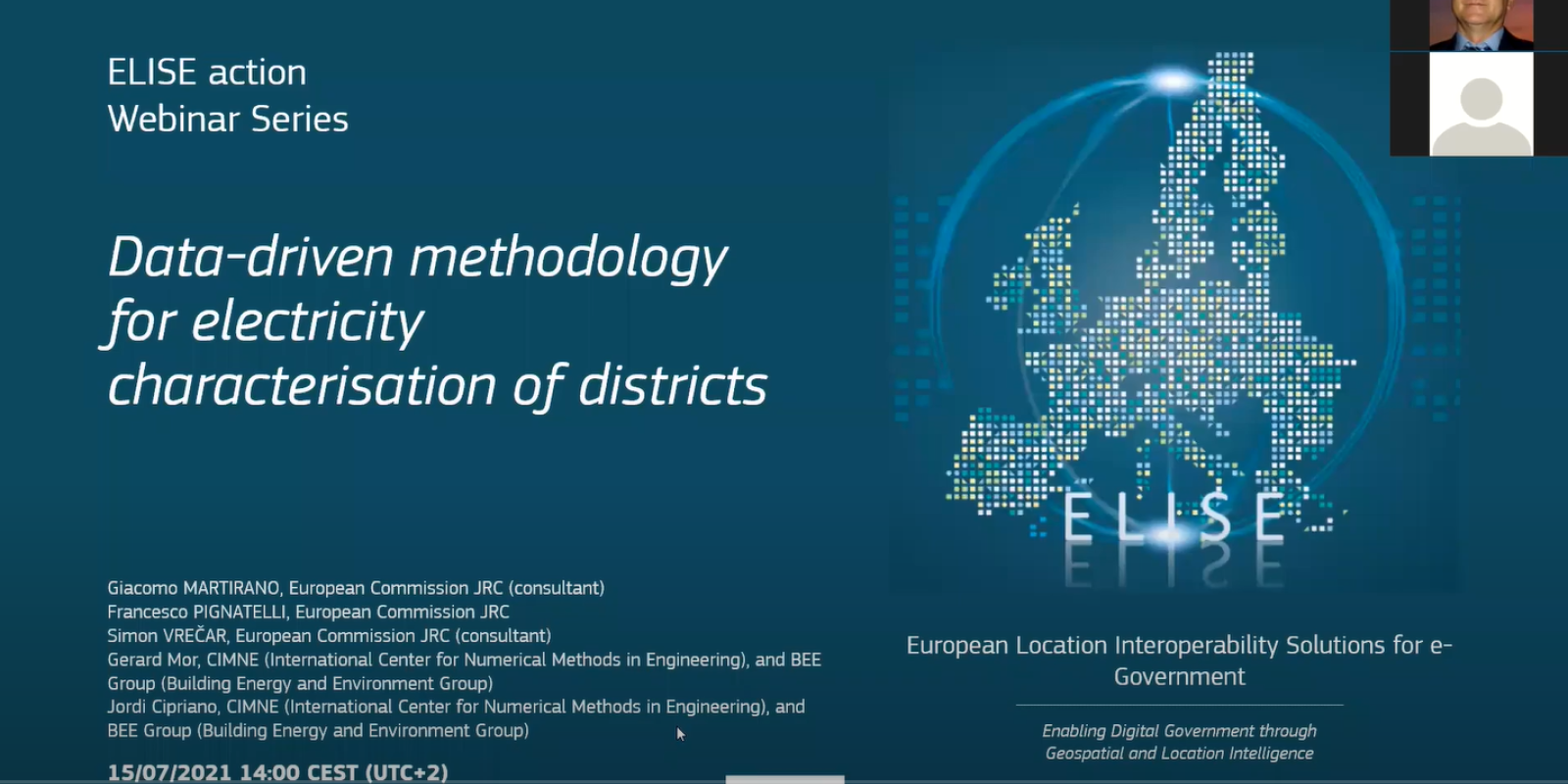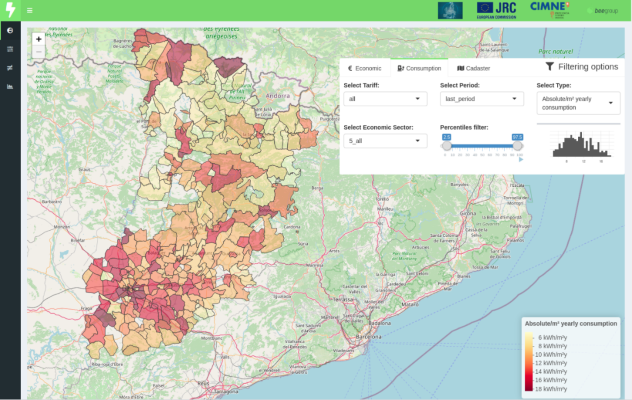Data-driven methodology for electricity characterisation of districts


Energy characterisation of existing buildings at multiple geographical levels (district, city, region) can be used to understand energy use trends. Moreover, it can correlate the energy consumption to characteristics of the territory and identify specific locations where there are buildings with poor energy performance.
Usually, such characterisation respecting different points of view with widely varying accuracy and associated costs is quite challenging to obtain. In the ELISE use case presented in this webinar, a bottom-up approach, based on a data-driven methodology, addresses the problems related to such characterisation.
This methodology was implemented and validated within the Spanish province of Lleida. The main goal was to provide a characterisation of the electricity consumption, either in the residential and in the public sector, at different geographical levels (Spanish census tract and postal code data are used for validation purposes).

In this webinar, Giacomo Martirano (external consultant at JRC), Gerard Mor and Jordi Cipriano of CIMNE (International Center for Numerical Methods in Engineering), and BEE Group (Building Energy and Environment Group) will walk us through::
- An overview of ELISE Energy & Location Applications
- State of the art methodologies and technologies to calculate energy efficiency indicators at the district level based on the integration of dynamic energy consumption measurements, cadastral data, weather data, and socioeconomic data.
- How these methodologies and technologies may support the business of start-up companies?
Then Jordi Cipriano will present how these methodologies and technologies may support a regional government's urban planning and energy efficiency policies, sharing first experiences with the Catalan government throughout the project Pi-Plates. Finally, Javier Orozco-Messana of DG CNECT will complement that by sharing some best practices related to urban energy simulation supporting the Local Digital Twins toolbox.
From this webinar, different stakeholder groups may benefit:
- Public Authorities aiming at detecting geographical areas with poor energy efficiency indicators and at planning, implementing and monitoring consequent improving actions.
- Private companies working in the energy efficiency sector, aiming at increasing their business opportunities, based on the trends of energy consumption in different geographical areas.




